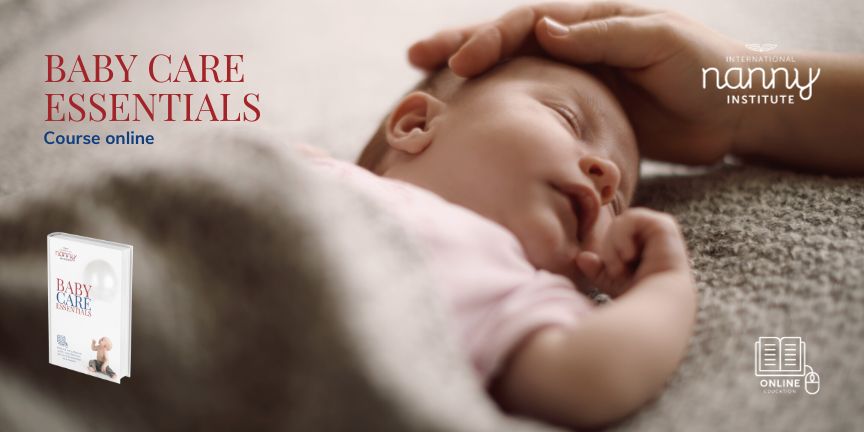Creating the Perfect Sensory Bin
Sensory bins are immersive experiences that engage a baby’s senses and promote their cognitive, motor, and emotional development. As a professional nanny, incorporating sensory bins into your caregiving routine can provide endless opportunities for learning and exploration. In this blog, we will dive into the world of sensory bins for babies, discussing what they are as well as their importance. We’ll also cover safety considerations to ensure a secure and enjoyable sensory experience.
What is a Sensory Bin?
A sensory bin is a container filled with materials that stimulate a baby’s senses, such as touch, sight, sound, and sometimes even taste and smell. These containers can be filled with a variety of materials, including but not limited to rice, pasta, water, sand, beans, or shredded paper. Objects and toys related to a specific theme or activity are added to enhance the sensory experience.
Importance and Benefits of Sensory Bins for Babies
Sensory bins play a vital role in the development of babies, as they provide a multitude of benefits and promote overall growth. Engaging with sensory bins allows babies to explore different textures, colours, shapes, and sounds, stimulating their senses and supporting sensory development. Through hands-on interactions, babies enhance their cognitive abilities by developing problem-solving skills, understanding cause-and-effect relationships, and grasping the concept of object permanence. Furthermore, sensory bins encourage the refinement of fine motor skills and hand-eye coordination as babies manipulate the materials and objects within the bin. The sensory experiences provided by these bins also foster language and communication skills, as babies express their reactions, observations, and discoveries through various forms of communication. Lastly, sensory bins spark creativity, imagination, and independent play, facilitating holistic development in babies.

Sensory development
Sensory bins offer babies the chance to touch, squeeze, and explore a variety of textures like smooth rice, squishy gel, or soft fabric, helping them refine their tactile senses and develop an understanding of different sensations. They can also discover various shapes, colours, and sounds through objects and materials in the bin, enhancing their visual and auditory perception.
Cognitive development
By manipulating and interacting with objects in sensory bins, babies develop problem-solving skills as they figure out how to pour, scoop, stack, or fit objects together. They learn about cause-and-effect relationships as they observe the outcomes of their actions, such as pouring water over sand or shaking a container filled with beads. Sensory bins also provide opportunities for babies to understand object permanence, realising that objects still exist even when they are temporarily hidden from view.
Fine motor skills
Sensory bins encourage babies to practice their fine motor skills by scooping, pouring, grasping, and manipulating objects. They can pick up small items like beans or beads, enhancing their hand-eye coordination and dexterity. Activities like transferring objects between containers or threading beads also strengthen their finger muscles and improve their fine motor control.

Language and communication
Sensory bins serve as a platform for babies to express themselves through verbal and non-verbal communication. They can babble, coo, or make sounds to convey their excitement or curiosity. Non-verbal communication, such as pointing, reaching, or gesturing, allows babies to express their preferences or indicate their interests in specific objects or materials within the sensory bin. Caregivers can engage in meaningful interactions by describing what they see, asking questions, and responding to the baby’s cues.
Creativity and imagination
Sensory bins provide an open-ended and imaginative play experience. Babies can explore different scenarios, such as pretending to cook with sensory bin ingredients or creating stories around toy figures or objects. This type of play nurtures their creativity and imagination, allowing them to experiment, problem-solve, and engage in self-directed play, which fosters independence and self-expression.

Safety Considerations
By implementing safety considerations, caregivers can create a secure and nurturing environment for babies to explore their senses, promoting their development while minimizing potential risks and hazards. Prioritising safety ensures that the benefits of sensory play can be fully enjoyed without compromising the well-being of the little ones in our care. Here’s why we need safety considerations:
Choking Hazard
Babies have a natural inclination to explore objects by putting them in their mouths. Without proper safety measures, small objects or loose parts in the sensory bin can pose a choking risk. Safety considerations, such as using age-appropriate materials and avoiding small objects, help prevent choking accidents.

Non-Toxic Materials
Babies may come into contact with the materials in the sensory bin through touch, taste, or smell. Ensuring that all materials used are non-toxic is essential to prevent any potential harm or adverse reactions if the baby ingests or comes into contact with the substances.
Allergies and Sensitivities
Some babies may have allergies or sensitivities to certain materials, textures, or substances. Safety considerations help minimize the risk of triggering an allergic reaction or causing discomfort for the baby. Being aware of any known allergies and avoiding potential allergens is essential to maintain a safe sensory experience.

Supervision
Babies require constant supervision during sensory play to ensure their safety. Safety considerations emphasise the importance of active supervision, enabling caregivers to monitor the baby’s interactions with the sensory bin and intervene promptly if any hazards or accidents occur.
Hygiene and Sanitization
Sensory materials can accumulate germs or bacteria over time, especially when multiple babies are using the same sensory bin. Safety considerations encourage regular cleaning and sanitization of materials, containers, and objects to maintain a clean and hygienic environment, reducing the risk of illnesses or infections.

Sensory bins provide babies with a world of exploration, discovery, and learning. As a professional nanny, incorporating sensory bins into your caregiving routine can foster sensory development, stimulate cognitive skills, and ignite their imagination. By creating themed, seasonal, or activity-based sensory bins, you can offer babies a wealth of sensory experiences tailored to their interests and developmental needs. Enrolling in Baby Care Essentials, an informative course on infant development, can provide you with the knowledge and skills to enhance the growth and development of young babies through engaging activities like sensory play. By expanding your expertise, you can elevate your career as a nanny, attract more families, and provide exceptional care that sets you apart from the rest.
Enrol in Baby Care Essentials today and unlock the potential to create a nurturing and stimulating environment that supports the holistic development of the babies in your care.









